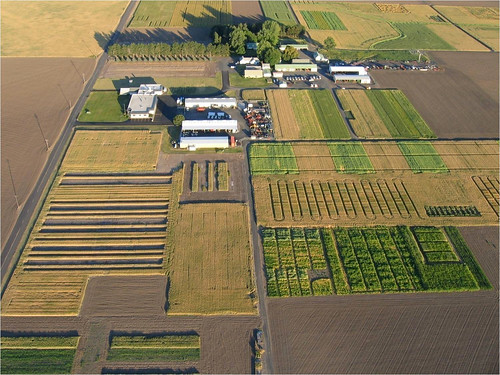
This post is part of the Science Tuesday feature series on the USDA blog. Check back each week as we showcase stories and news from USDA’s rich science and research portfolio.
Responding to Climate Variability is one of the goal areas of the REE Action Plan. The objective is to develop science-based knowledge to address climate variability, position agricultural communities to reduce emissions of greenhouse gases, and enhance carbon sequestration.
Many valuable USDA accomplishments for the year 2015 were the result of cross-divisional teams that developed useful tools to support decision-makers with research-based data. Knowing weather and climate patterns--driving forces behind the success or failure of cropping systems--is vital information to land managers. One such tool, AgroClimate, supported by REE and the National Oceanic and Atmospheric Administration (NOAA), helps users manage climate risk with tools that provide information on crops best suited to grow in their region, based on water availability and the amount of water a crop will use.
Useful to Usable (U2U) is an integrated research and extension project funded by the REE working to improve farm resilience and profitability in the North Central United States by transforming existing climate data into usable products for the agricultural community. The goal is to help producers make better long-term plans on what, when, and where to plant, and how to manage crops for maximum yields and minimum environmental damage.
Understanding the impact of climate change on agricultural production and food security is crucial to help feed, clothe, and fuel a growing world population. REE joined with multiple institutions to model the economic responses of global agriculture to scenarios of climate change through 2050, including changes in harvested area, international trade, production, consumption, and price. All scenarios modeled show the potential for significant increases in prices for food and agricultural commodities, raising important concerns about food security, particularly for poor households.
Ensuring nutritional security and supplying the calories for an ever-growing population presents a major challenge because of a combination of factors. REE has formed transdisciplinary teams to enable agriculture to adapt to a changing climate through the Genetics by Environment by Management (GxExM) approach, seeking to increase actual farmer yields rather than increasing potential yields offered by crop genetic potential.
Under the heading of GRACEnet - Greenhouse gas Reduction through Agricultural Carbon Enhancement Network, REE scientists are generating information that is needed by producers, program managers, and policymakers concerning carbon storage in agricultural systems. The goal is to develop practices that enhance carbon sequestration in soils and to provide a sound scientific basis for carbon credits and trading programs.
These achievements represent just a sample of the accomplishments across the Department in the effort to respond to changes in the climate. USDA’s research, education, and extension programs provide the knowledge necessary to adapt agricultural and forestry production practices appropriate to changing climate and to ensure knowledge researches our many partners and the public.
